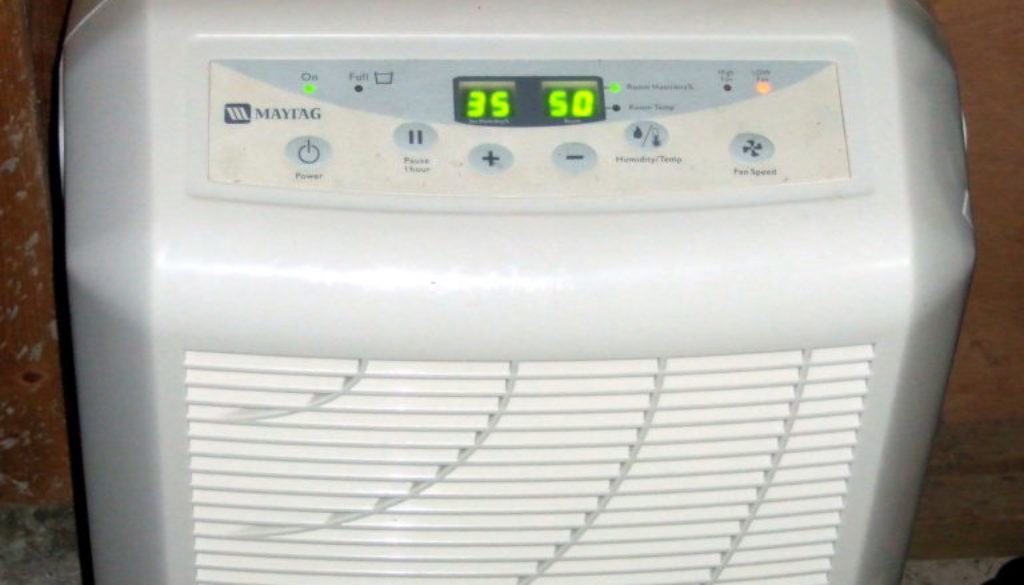Furnace Fan and Dehumidifier Efficiency Standards Take Effect
By Emily Deanne, Natural Resources Defense Council
New equipment in America’s homes and buildings will soon be more energy efficient thanks to energy standards that just went into effect for dehumidifiers and the fans moving air from furnaces and central air conditioning systems through houses. You may not realize these two pieces of household equipment are big energy users, and updated efficiency standards will translate into billions of dollars in energy bill savings nationwide.
The average consumer will save about $340 to $500 in energy costs over the life of a furnace fan and between $100 and $140 over the life of a dehumidifier. Nationally, the savings from the two standards, which were adopted during the Obama administration but became effective this summer, will add up to more than $30 billion. Now that they’re in effect, over the next 30 years they’ll also help avoid over 200 million metric tons of carbon dioxide pollution being pumped into the atmosphere by power plants that generating the electricity to run them.
The standard for dehumidifiers was finalized in 2016 but just took effect in June 2019, and the standard for furnace fans was finalized back in 2014 and officially became effective in July. This means all new products must meet improved levels of efficiency.
Americans will be enjoying these energy savings even though the Trump administration’s Department of Energy (DOE) seems to be trying to strangle efficiency progress, including attempting to roll back efficiency standards for lightbulbs and stalling on updating 18 other efficiency standards. The dehumidifier and furnace fan improvements will create significant consumer and energy savings, and reduce the amount of carbon dioxide pollution from power plants that is exacerbating the climate crisis.
Decidedly Better Dehumidifiers
As summer temperatures skyrocket and sweltering heatwaves ravage cities across the nation, staying cool has become a top priority for many Americans. Dehumidifiers, which include both portable and whole-home versions, help remove excess moisture from the surrounding air to control the humidity of a room, making you more comfortable.
You may not realize that your outdated dehumidifier is using an exorbitant amount of energy to keep you comfortable: up to 1,000 kilowatt-hours of electricity per year – roughly twice as much as your refrigerator. This excess energy use creates the same amount of climate-heating greenhouse gas emissions as those released from a passenger car driven for more than 1,700 miles.

The updated standard making dehumidifiers more efficient will reduce their energy use by 30 billion kilowatt-hours over the next 30 years. That’s equivalent to one year’s worth of energy use by 2.5 million U.S. households! The corresponding carbon pollution reduction is equivalent to the annual emissions from about 4.5 million cars. This is the third federal efficiency standard to for dehumidifiers and thanks to the latest updated version, dehumidifier energy use will be reduced by about 15 to 25 percent.

Flickr
Finer Furnace Fans
Most people are not aware that their home has a furnace fan — an electric fan constantly busy at work circulating air through a residential building’s duct work. These fans that move hot or cool air around your home also use high levels of energy. In fact, furnace fans typically use more energy per year than a new refrigerator and a new dishwasher combined–and some furnace fans account for up to 10 percent of the total electricity use of an average U.S. home!

Department of Energy
Thankfully, the new standards will reduce energy use by a whopping 40 percent. With more efficient fans we should see a substantial decrease in climate-warming carbon emissions associated with the generation of electricity to run them. The DOE estimated that the implementation of this standard would result in an emissions reduction of 180.6 million metric tons of carbon dioxide over the next three decades. That equals the average annual electricity use of over 31 million U. S. homes.
In addition, consumers will save up to $29 million from fans purchased over the next 30 years, after accounting for any increase in costs. This is the first federal standard to be put in place for furnace fans, so we are witnessing energy efficiency history being made in real time.
Improving energy efficiency is one of the most effective ways to reduce overall energy consumption. As we endure the lack of action from the Trump administration on efficiency improvements, these standards represent a bright beacon of good news in a sea of stagnation for climate progress.
Check out this list for what else is coming in 2019 for efficiency standards:
Updated standards going into effect for:

